Faithful friends,
By the grace of God and through the efforts of many people praying, I was able to accomplish the goals of the trip.
This letter is probably longer than you would like, but it does have pictures. 🙂 The “shorter story” will give you a quick summary. The “longer story” has some cool pictures and some stories of the people I encountered.
The Shorter Story
Here are some of my initial thoughts from the trip:
- Sin compounding sin looks pretty ugly – in Africa it means people rape and kill in a particularly savage manner. As it relates to materialism in America, what does it mean? Don’t know; maybe another depression at some point?
- Africa has lots of Christians, yet the wars in Rwanda and Congo have been exceedingly deadly with people telling me that Christians are as involved as anyone. 800,000 were killed in Rwanda in 100 days. Several million have been killed in Congo in three wars during the last 12 years.
- Many of the villages in Ethiopia and Congo have many churches. The Christians need equipping – lots of lay pastors leading churches. The church does not seem to make much difference in the life of the community. I wonder if it’s time for a second wave of missions effort that is focused on equipping. The first wave did a great job leading people to Christ. Now seems to be the time to help build them to maturity. Specific areas for equipping might be Bible study methods, the role of men in marriage, and peacemaking / forgiveness of others.
- The poverty is overwhelming. The poverty has so many causes; it is hard to know where to start. The infrastructure is poor – the roads are more like well traveled dirt paths. The families are very large – most women I met had 5 to 7 kids. Half the population in the country is younger than 15. The labor force is unskilled and there is not much industry. The continuing violence hampers investment. Women seem to do all the work. One man who did work hauled loads on his back and walked miles and miles to deliver them. He made $0.50 to $0.75 per day – when he worked. He had a wife, 20 years old, and seven kids (five kids by a previous wife who had died). He would buy food when he worked; there was no food when he had no work. Then there is the heartbreaking story of Regime; see below.
- The impact of the rape of the population cannot be fathomed. In 2004, 16,000 women were raped in three days in Bukavu. The rebel general told his troops, “This city is yours for three days.” We visited a hospital that treats rape victims. These rapes are not what we think of as rape; they are far more brutal. The story of one woman appears below.
The Longer Story
Food for the Hungry (FH – www.fh.org) is a fabulous organization with many people who have great passion for Jesus and for impoverished people around the world. The website above is for the U.S. organization.
Ethiopia
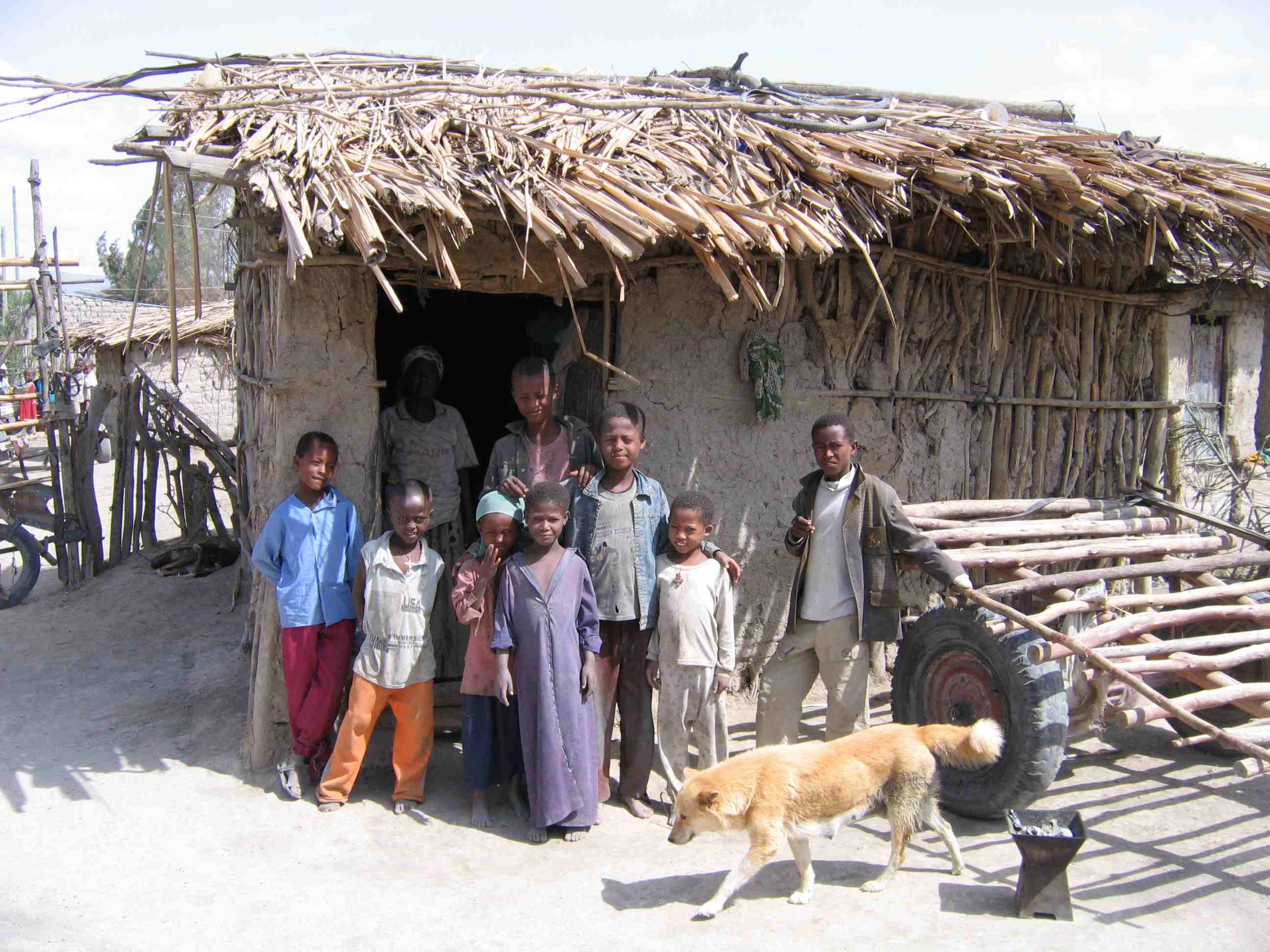 My first stop was Ethiopia. We traveled about 150 miles south of the capital, Addis Ababa. Because it was my first time in Africa, it was a great drive even though it took four hours. I soon learned that 150 miles in four hours is fast by Congo standards. The road had two lanes with wide shoulders and was in great condition. Unlike the U.S., these roads are shared with donkey pulled carts, hand propelled carts, and lots of cows, goats, donkeys and people walking. Even in the middle of nowhere, there are people walking.
My first stop was Ethiopia. We traveled about 150 miles south of the capital, Addis Ababa. Because it was my first time in Africa, it was a great drive even though it took four hours. I soon learned that 150 miles in four hours is fast by Congo standards. The road had two lanes with wide shoulders and was in great condition. Unlike the U.S., these roads are shared with donkey pulled carts, hand propelled carts, and lots of cows, goats, donkeys and people walking. Even in the middle of nowhere, there are people walking.
The air was like the air in Los Angeles. The cause wasn’t smog, but dust – this part of Ehiopia missed the spring rains so the grass was gone and the ground looked like a dessert. The rainy season is supposed to start in June so the people should get some relief.
We visited two mud huts in Zeway, Ethiopia. FH operates a child development program in that community. Both families were muslim. Both huts had one light bulb. The houses were built on government land as squatters. The government destroys the houses every year or so.
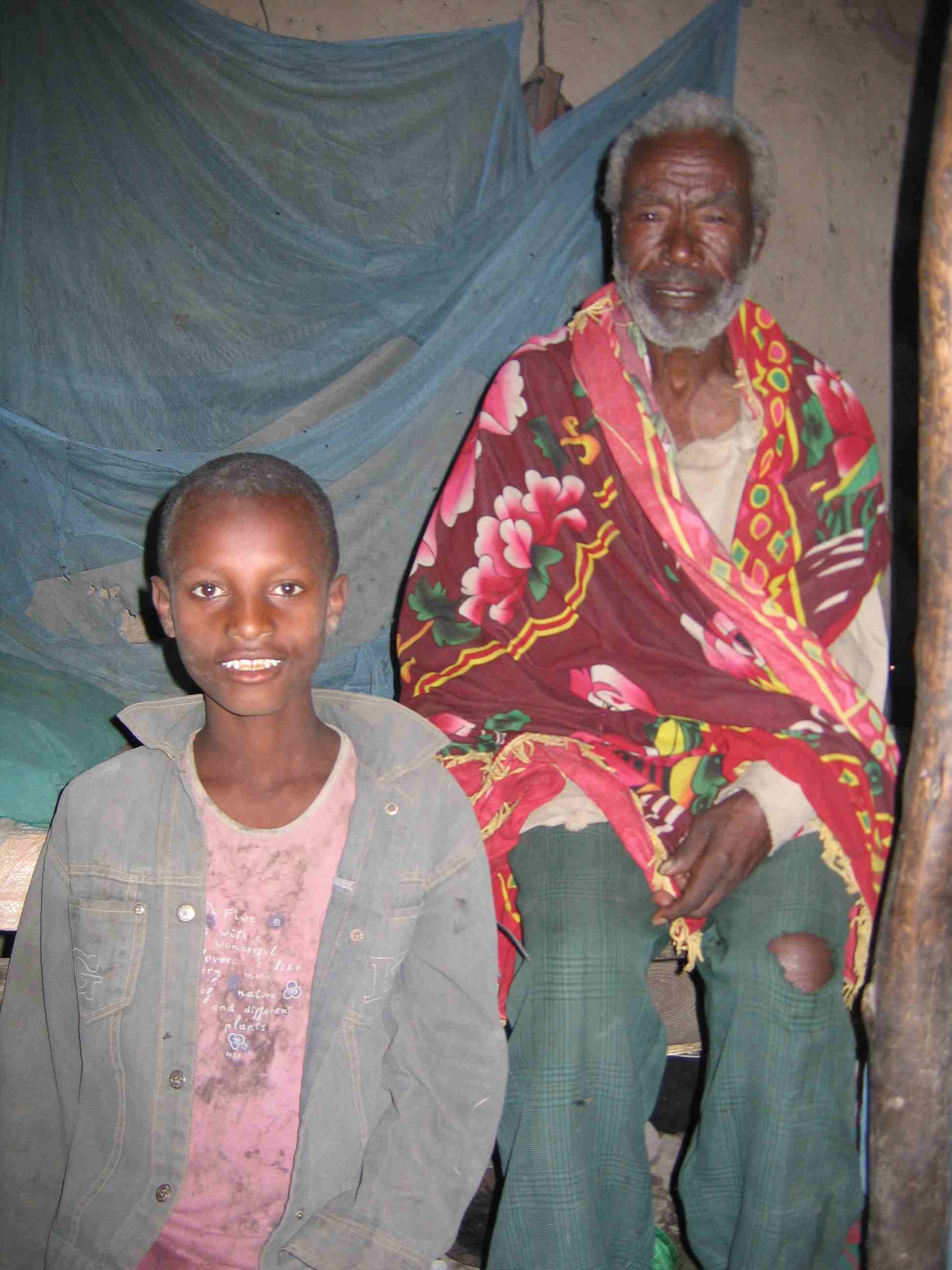 We sat inside this mud house to see one of the kids sponsored by people who donate to FH. The child is 10 and wants to be a doctor. He lives with a blind grandfather (recently blind), a grandmother, a deaf mute mother and her five other kids by unknown fathers. Deaf mutes are not treated well in the community. The mother actually had seven kids, but one had died. The oldest living kid was 10 and the youngest was probably 1-2 years old. As an aside, someone in the know told me that death in childbirth is just as significant a cause of death for females as AIDS. Sponsorship means that Food for the Hungry gives the family a certain amount of dried food and a school uniform and school supplies for the 10 year old (the other kids are out of luck). A caseworker checks in about 4 times per year and a volunteer from a local church checks in more often. They check his school work, see if he has been washing his clothes (he hadn’t) and talk with the grandparents about whether they are giving him enough time to do his schoolwork at home (as opposed to working).
We sat inside this mud house to see one of the kids sponsored by people who donate to FH. The child is 10 and wants to be a doctor. He lives with a blind grandfather (recently blind), a grandmother, a deaf mute mother and her five other kids by unknown fathers. Deaf mutes are not treated well in the community. The mother actually had seven kids, but one had died. The oldest living kid was 10 and the youngest was probably 1-2 years old. As an aside, someone in the know told me that death in childbirth is just as significant a cause of death for females as AIDS. Sponsorship means that Food for the Hungry gives the family a certain amount of dried food and a school uniform and school supplies for the 10 year old (the other kids are out of luck). A caseworker checks in about 4 times per year and a volunteer from a local church checks in more often. They check his school work, see if he has been washing his clothes (he hadn’t) and talk with the grandparents about whether they are giving him enough time to do his schoolwork at home (as opposed to working).
The house was about 10×10 with a thatch roof. There were many holes in the mud walls – one whole area was nothing but sticks – the mud had come off. The thatch ceiling also had some holes. Think about it, there was no one but kids in the household to earn money and the oldest was 10. Did you do the math? Nine people living in the 10×10 house. There was a bed fashioned out of sticks; they stored some stuff under it. The floor and walls were packed mud. It was reasonably clean inside and didn’t smell. They have a cooking contraption that is about 8”x 8” on a little stand (lower right on picture). You put charcoal in it. It’s about 6 inches deep.
Flies were everywhere. There were about five kids standing in the doorway while the grandparents, the 10 year old, the case worker and four of us were inside. Four of us sat on a bench that they brought in for the occasion. Don’t know where they got it. Those five kids in the doorway each had about five flies on their faces – didn’t seem to bother them – it sure bothered me.
By the way, I had great fun taking pictures and then showing the people their picture on my camera’s LCD screen. Apparently, people everywhere, no matter their age, like to see themselves in pictures!
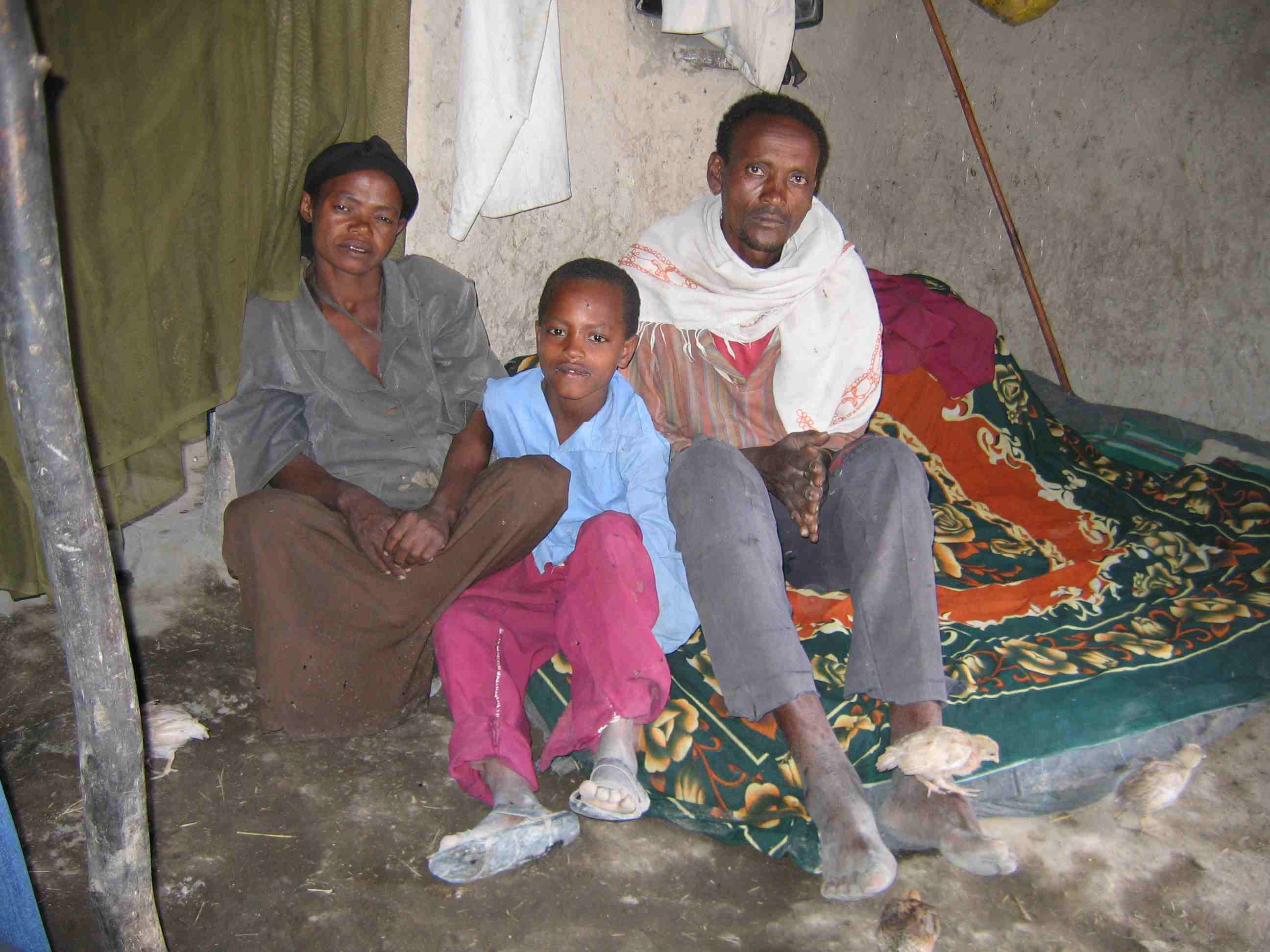 Here is a picture of the second home that we visited. Mohammed, 10, was the sponsored child in the second family. His mother had died and he lives with his father and stepmother. All together there are six kids and his stepmother is pregnant. This mud hut actually had two rooms. We were in the room where the husband and wife slept. You can see their mat and blanket in this picture. This family was not as poor as the first – primarily because there was a man who could work. He did day labor, including patching other people’s houses. In this picture, note the mud floor and the three birds roaming freely – there is one on the man’s foot. Mohammed’s father understood the value of education; he was going to school at night. The caseworker had a discussion of birth control with him, but he was not eager to embrace the practice.
Here is a picture of the second home that we visited. Mohammed, 10, was the sponsored child in the second family. His mother had died and he lives with his father and stepmother. All together there are six kids and his stepmother is pregnant. This mud hut actually had two rooms. We were in the room where the husband and wife slept. You can see their mat and blanket in this picture. This family was not as poor as the first – primarily because there was a man who could work. He did day labor, including patching other people’s houses. In this picture, note the mud floor and the three birds roaming freely – there is one on the man’s foot. Mohammed’s father understood the value of education; he was going to school at night. The caseworker had a discussion of birth control with him, but he was not eager to embrace the practice.
Rwanda
We had to spend one night in Kigali, the capital of Rwanda, on our way to Bukavu, Congo. In Kigali, we walked to a nice Italian restaurant that overlooked the hills. It’s hard to believe that 800,000 people were killed here just 14 years ago. We were told that the streets were littered with bodies – unbelievable. A taxi driver told us that his wife’s parents and brother and sister were killed.
Bukavu, Democratic Republic of the Congo
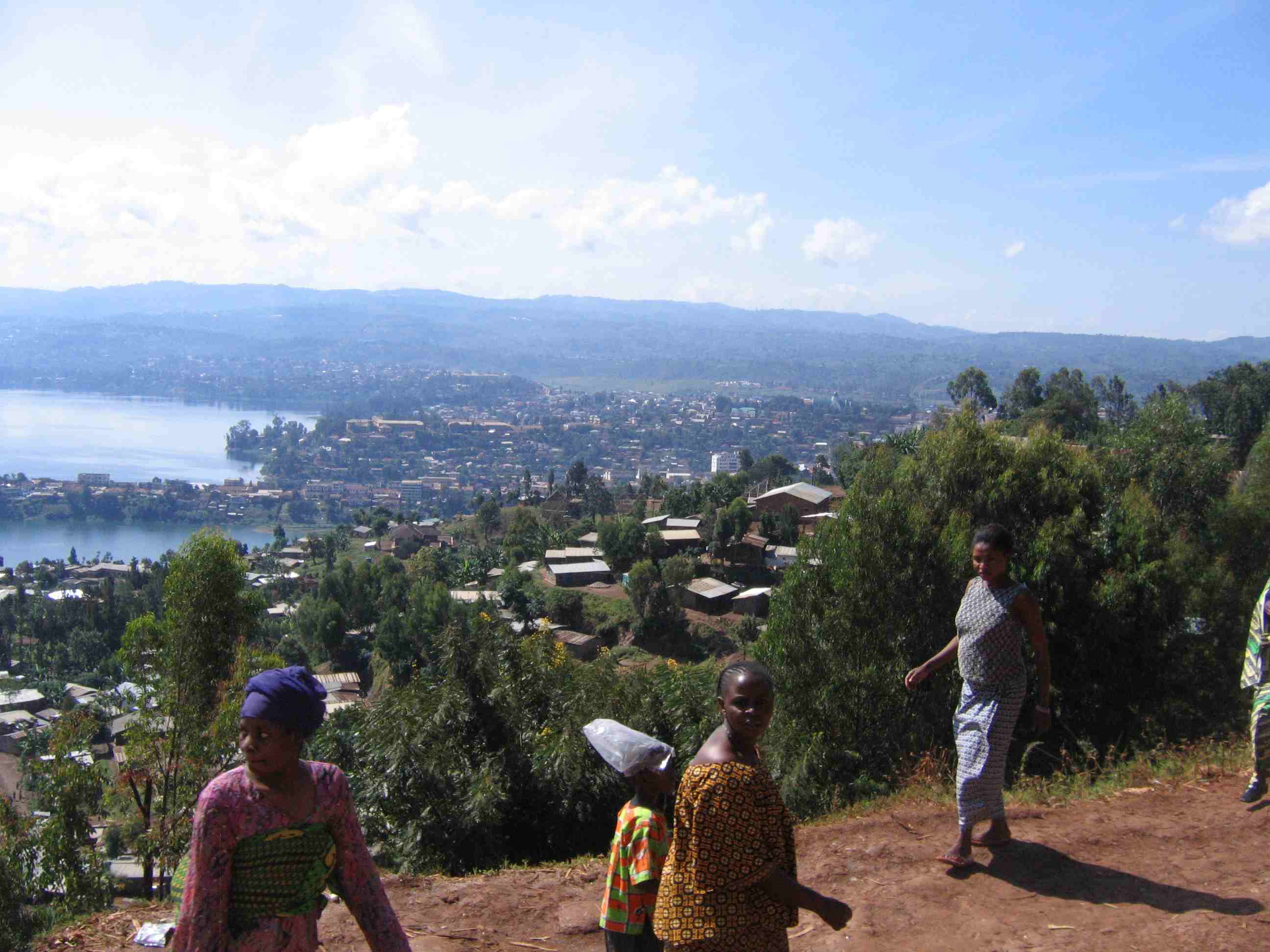 Kigali seemed like it was an up and coming city with good roads, nice restaurants and a clean look. Bukavu, on the other hand, looked like what it is – a war zone.
Kigali seemed like it was an up and coming city with good roads, nice restaurants and a clean look. Bukavu, on the other hand, looked like what it is – a war zone.
The bridge from Rwanda to Congo is a series of wooden planks that long age ceased to be attached to the steel structure. There was a certain discomforting sound as you drove over wooden planks that moved underneath.
Bukavu had few paved roads; most of them were a mixture of rocks and dirt – the pavement long ago giving way to everyday use and frequent rains. In the Congo, Land Rovers and Land Cruisers were the vehicles of choice – not just for the 4WD, but for their stiff suspension and overall toughness. Even short drives were bone jarring efforts. Ordinary cars would never last.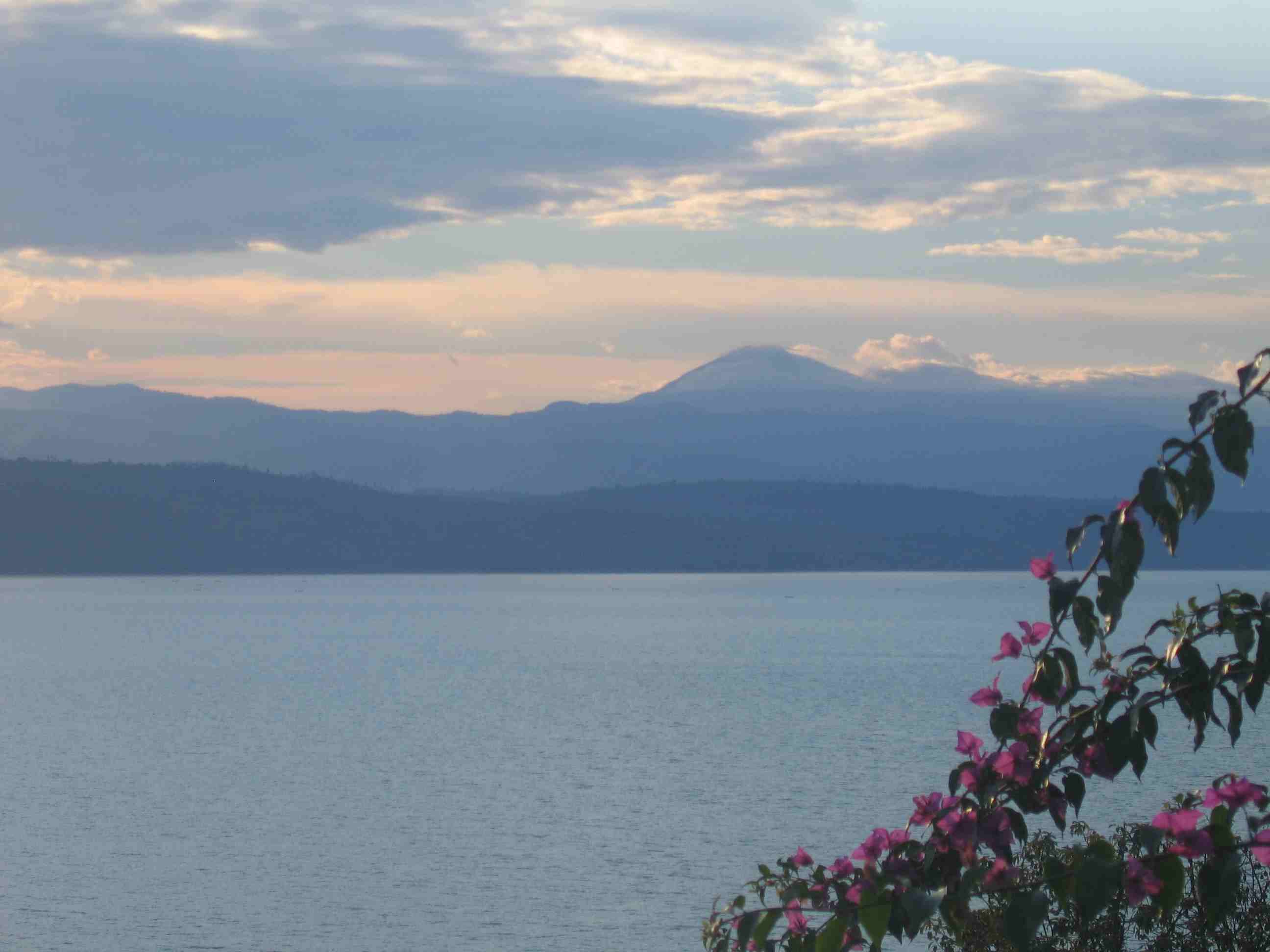
New houses and buildings have not been built in years. Many houses look like they have been under construction for years – construction probably ceased in the 1996 at the start of the first war. All of the buildings needed a new coat of paint years ago. The aging paint shows through a layer of brown – the color of the dirt in the roads.
The people look tired and worn like the buildings. They would smile and laugh, but only after they got over a some fear or shyness when I would speak to them. They did not enjoy strangers as much as the people of Ethiopia. The most dazzling part of the city was the clothes the women wore – quite colorful and always clean. The clothes were quite a contrast to the rest of the city.
With all that said, the Congo is a beautiful country – huge green lakes, lush landscapes, towering green mountains with deep valleys. As tough as the drives were, I thoroughly enjoyed seeing the variety and beauty of the country. One day, we traveled from Bukavu to a small village called Lwingha about 50 miles away. The trip took nearly 3 hours. Trips that we measure in hours would take days in the Congo. Here, you don’t slow down for the numerous rocks and potholes, just for cows, goats and chickens that might be crossing the dirt road. Riding in a 4WD vehicle on these roads was like riding bareback on a bull.
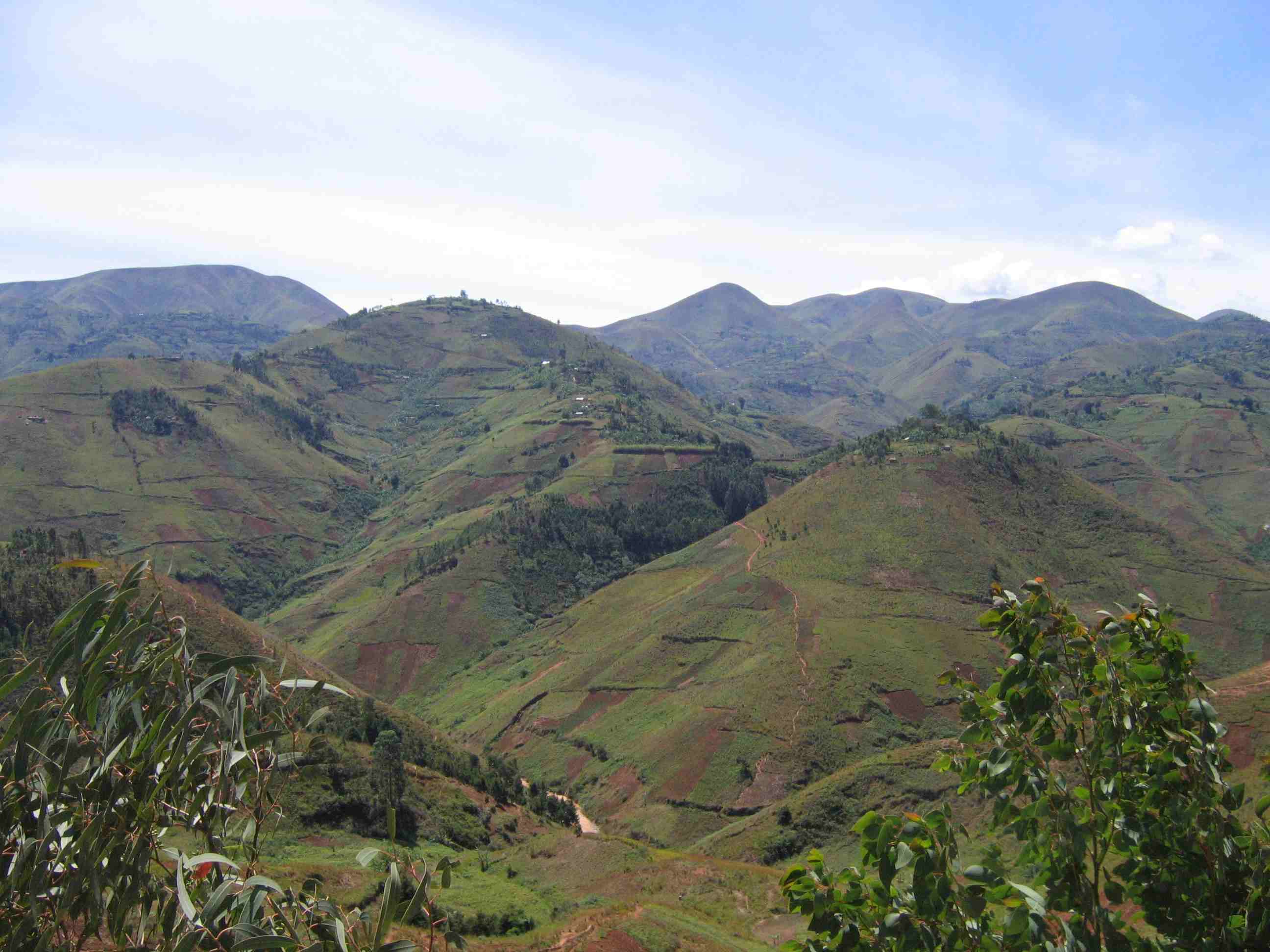 Lwingha lies in a mountainous region. FH, through a US AID grant, is demonstrating sustainable agriculture and aquaculture. The goal of the program is to enhance the food security and nutrition of the people here and in surrounding villages. Some people walk ten hours one-way for the privilege of participating.
Lwingha lies in a mountainous region. FH, through a US AID grant, is demonstrating sustainable agriculture and aquaculture. The goal of the program is to enhance the food security and nutrition of the people here and in surrounding villages. Some people walk ten hours one-way for the privilege of participating.
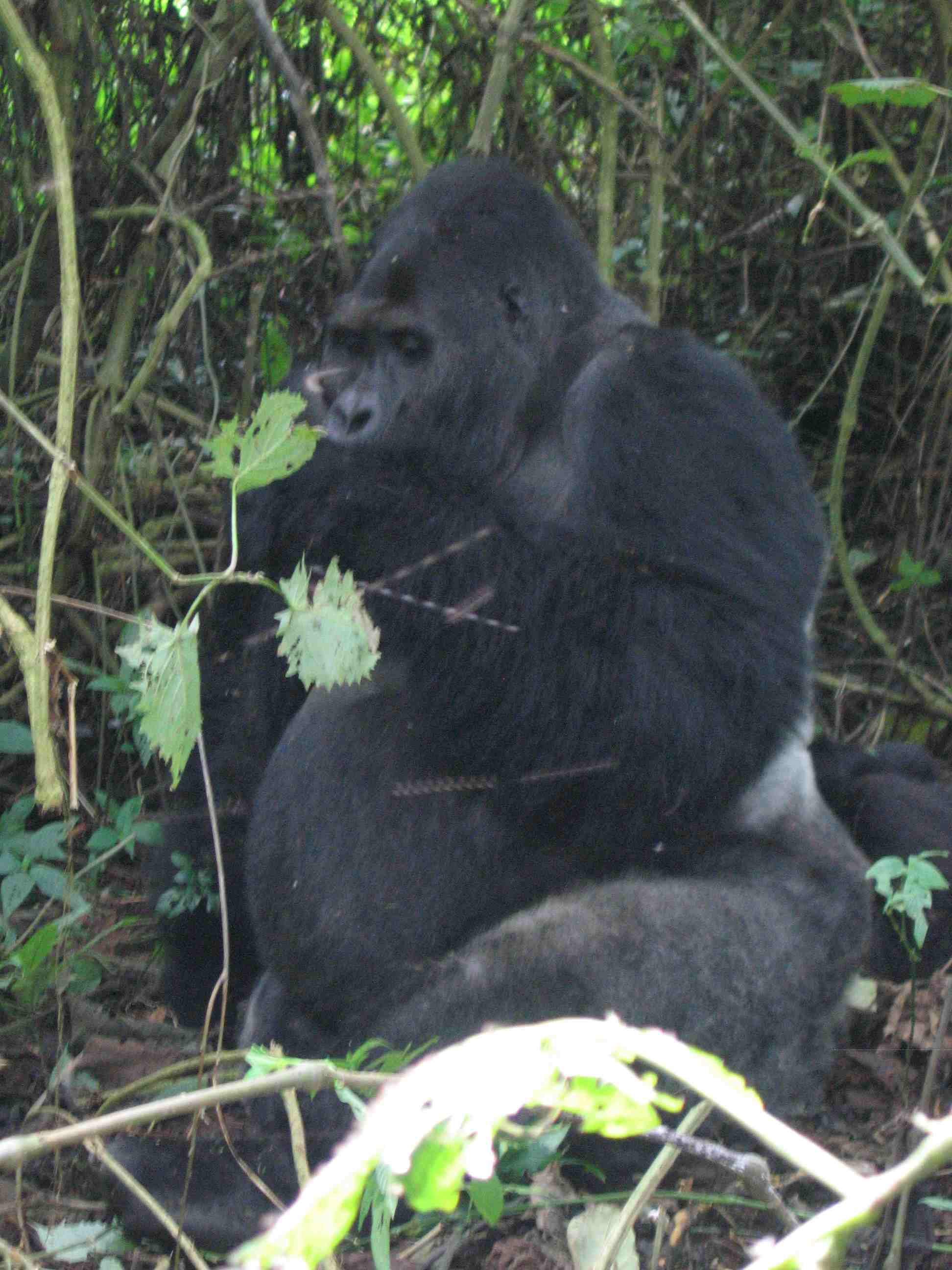 The most unique experience was going to the Kahuzi-Biega National Park to see the mountain gorillas. Now, this park was no zoo. It is a beautiful, mountainous jungle that has been preserved as habitat for mountain gorillas. (Think “Gorillas in the Mist.”) We drove into the park in a 4WD vehicle and then walked about 30 minutes to the area where the gorillas had been found. The gorillas were in the trees eating. We waited for them to come down and relax after their meal. They did not disappoint. All in all, we saw more than 10 gorillas from as few as 15 feet away.
The most unique experience was going to the Kahuzi-Biega National Park to see the mountain gorillas. Now, this park was no zoo. It is a beautiful, mountainous jungle that has been preserved as habitat for mountain gorillas. (Think “Gorillas in the Mist.”) We drove into the park in a 4WD vehicle and then walked about 30 minutes to the area where the gorillas had been found. The gorillas were in the trees eating. We waited for them to come down and relax after their meal. They did not disappoint. All in all, we saw more than 10 gorillas from as few as 15 feet away.
We visited a village just outside of Bukavu. As soon as we got out of the Land Rover, we were immersed in poverty. Most of the 66 million Congolese people live on less than $1 per day. Here’s an example: Regime has five kids under five, including two 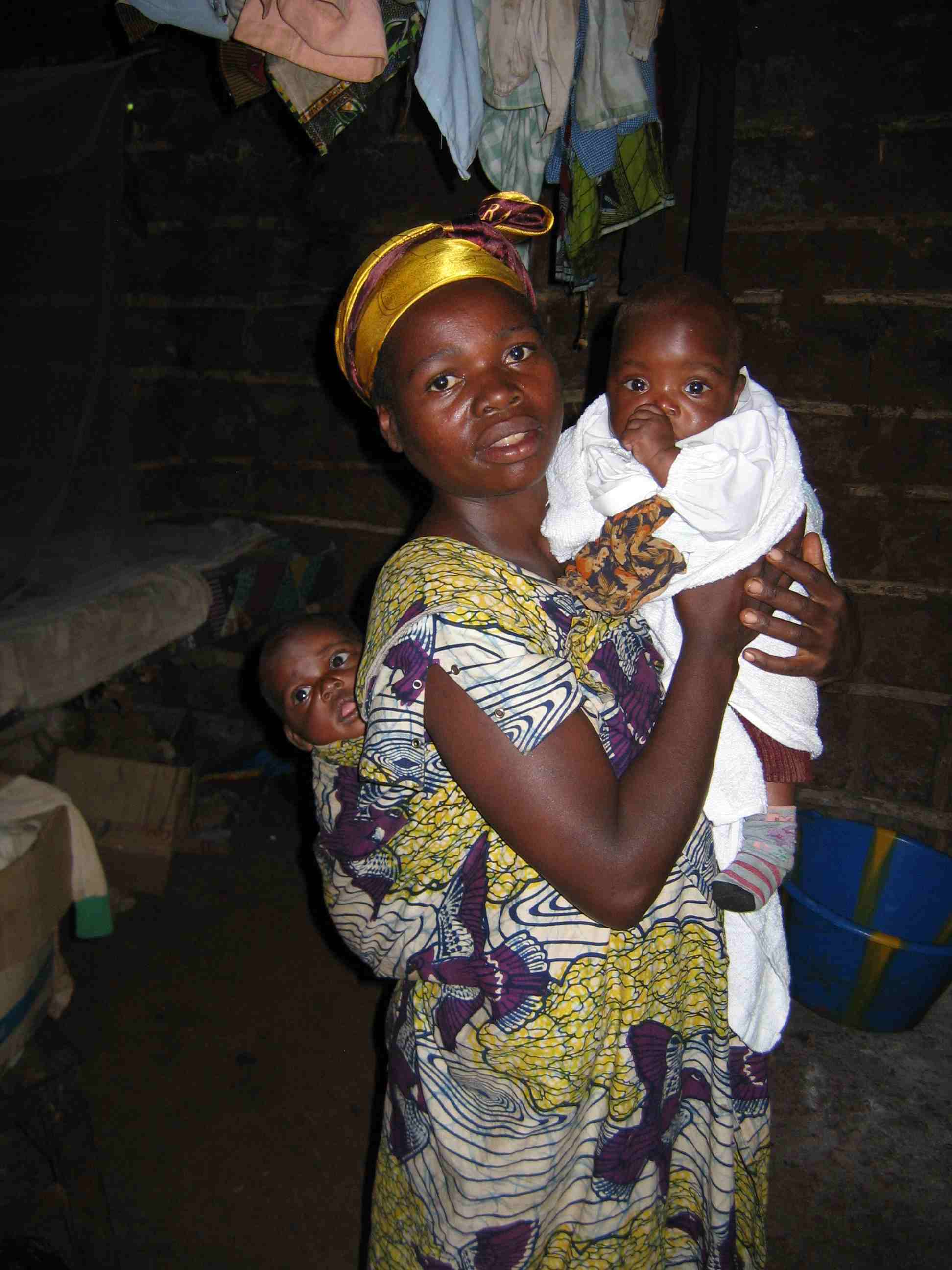 sets of twins. Her husband left her and took part of the roof with him after the second set of twins was born. She has no source of income and she can’t work. She used to sleep on the dirt floor that became muddy every time it rained because of the holes in the roof. One of the missionaries helped build her a bed. At night while she sleeps, the babies crawl over to her looking for milk. She knows they must be hungry, but her milk is drying up. She didn’t ask, but I gave her some money. On the one hand, how could I not? On the other hand, giving her money seemed like throwing one drop of water into an empty swimming pool – it didn’t seem like it would make much difference in the long run. But maybe that’s what Jesus had in mind when He spoke the words of Matthew 6:34, “And do not be anxious for tomorrow, for tomorrow will take care of itself. Each day has enough trouble of its own.”
sets of twins. Her husband left her and took part of the roof with him after the second set of twins was born. She has no source of income and she can’t work. She used to sleep on the dirt floor that became muddy every time it rained because of the holes in the roof. One of the missionaries helped build her a bed. At night while she sleeps, the babies crawl over to her looking for milk. She knows they must be hungry, but her milk is drying up. She didn’t ask, but I gave her some money. On the one hand, how could I not? On the other hand, giving her money seemed like throwing one drop of water into an empty swimming pool – it didn’t seem like it would make much difference in the long run. But maybe that’s what Jesus had in mind when He spoke the words of Matthew 6:34, “And do not be anxious for tomorrow, for tomorrow will take care of itself. Each day has enough trouble of its own.”
Finally, we visited Panzi Hospital in Bukavu. Rape unifies most of the women there. And they are the fortunate ones. They made it to a hospital that specializes in the treatment of women who have been brutalized sexually. Typically, rape victims are abandoned by their husbands and their villages. One woman that I met had been raped by seven rebels one night. We did not ask for any other details.
The women spend two to six months living on the grounds of the hospital learning a skill like sewing while they are healing physically and emotionally. Then the hospital staff tries to reconnect them with their village. In April, this hospital saw 239 rape victims. I can’t imagine the impact on society over the long term. Think about the anger that these women, their children and their relatives must have.
Conclusion
It is too soon for me to come to any firm conclusions.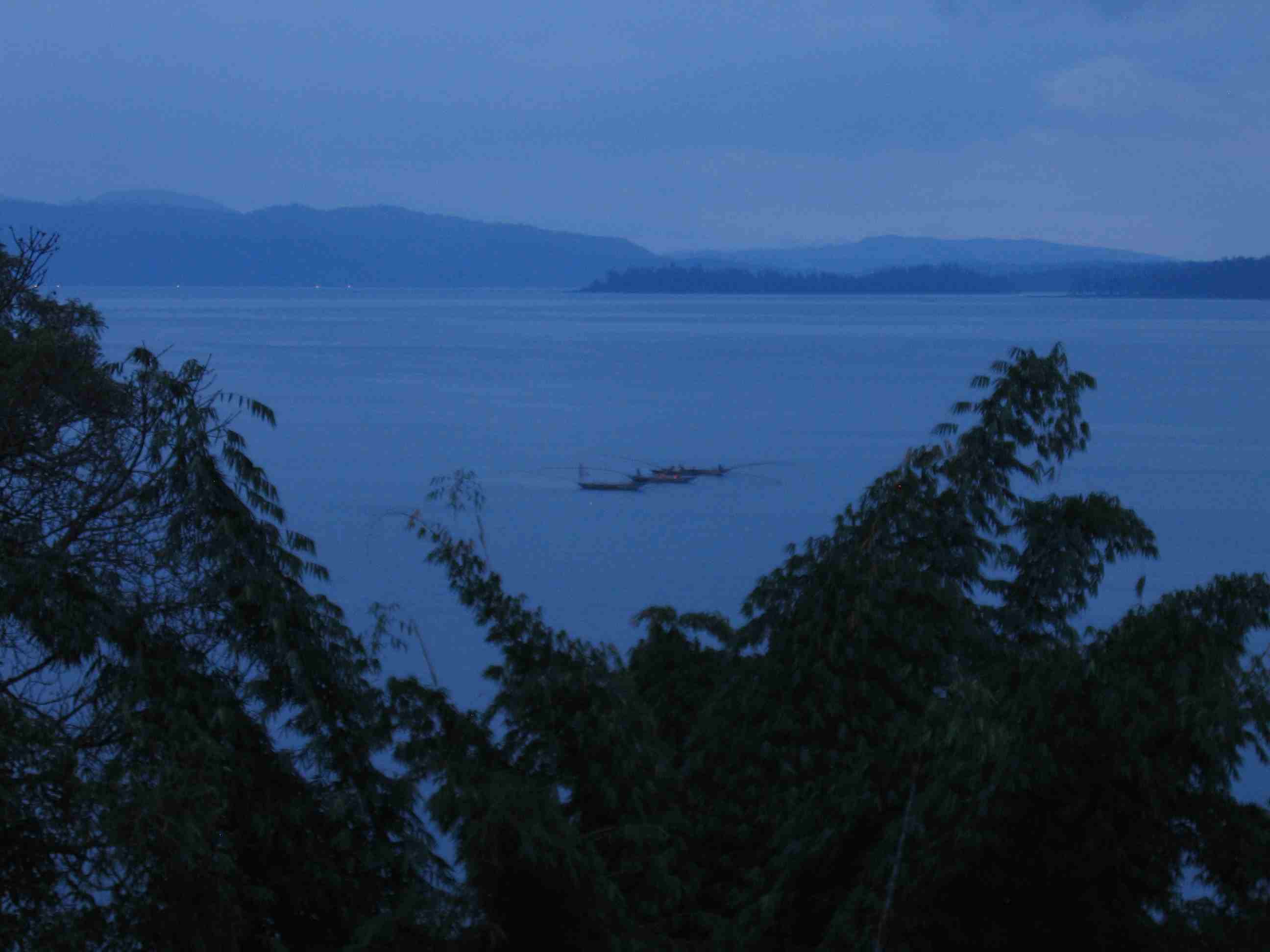
I will be pondering the Congo and Ethiopian churches’ apparent need for equipping.
All in all, it was an amazing trip:
- Seeing the beauty of God’s creation juxtaposed with the impact of sin – war, rape and greed.
- Talking with Africans who were content with simple lives.
- Meeting missionaries working tirelessly and passionately to improve people’s spiritual and physical poverty.
- Gaining new understanding of the value of the hope that we have because of Jesus.
After seven pages, it seems silly to offer you more. But if you should have an interest in seeing more pictures, hearing more tales, or brainstorming about “so what now,” let me know.

It is very great and amazing for the work carried out in Bukavu and other part of the world for the Glory of God . We live in Goma city and are interested in the programme : Email :[email protected] . Cell phone +243-997-622-205 . We heard of you through Bob Collins : [email protected] . residing Pittsburg we partner with .
Simeon Muhunga